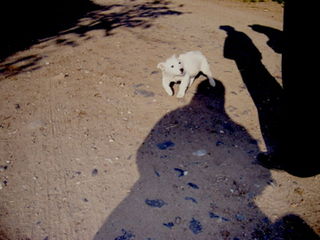Attention
What a Dog Is Not
A new book attempts a different definition of dogs and falters.
Posted May 7, 2016
To Raymond and Lorna Coppinger and their chief hagiographer at The New York Times, James Gorman, who wrote a fawning profile of the pair recently, the vast majority of the world’s one-billion dogs all look alike because they have evolved to fill the ecological niche of village dump-diver or biological garbage disposal. Like all of Raymond Coppinger’s books, many of them co-authored, What Is a Dog? is a reductionist work of illogic that relies on simplistic scientific arguments and presentism, manifest here in the assumption that the present circumstances of street dogs or village dogs have always been thus. The argument is grounded in Ray Coppinger’s belief that dogs cannot possibly have evolved from gray wolves because they look nothing like large northern wolves who feed on caribou, moose and other large animals. Were he to compare those thirty-pound street dogs to the small desert wolf, he might find something different.
At the base of this book lies the Coppingers’ notion—wrong in all regards—that dogs are a species unto themselves and began to appear some 7,000 years ago, a time coincident with the first dog burials. The first dog burial in the archaeological record dates to around 15,000 years ago. The Coppingers also misrepresent or ignore evidence that dogs evolved from a gray wolf, most likely a now extinct subspecies or population, and continued to crossbreed for thousands of years with various subspecies of wolves who arose about the same time dogs did, at the end of the Last Glacial Maximum, Genes flowed from wolves to dogs and dogs to wolves. In some parts of the world, the admixture continues. In the Caucasus, for example, wolves and livestock guarding dogs are still interbreeding.

The Coppingers take what can only be described as an ahistorical view of the dog-human relationship. They seem to believe it has always resembled the current model of the dog occupying the niche of human- waste consumer and occasional early warning system for incoming human or nonhuman predators. Some attention is paid to the system of transhumance—the seasonal movement of sheep between mountain and lowland pastures—and the large guard dogs who make it work, but the Coppingers also seem most intent on making those dogs nothing more than large village dogs. Indeed, nearly nothing is said about other historic and traditional uses of dogs in particular cultures or the ways societal changes affect dogs and people.
Having spent most of their book arguing that 85 percent of the world’s one-billion dogs are village/street garbage hounds —the rest are human created purebreds or their crosses—that all look the same and occupy the same niche, the Coppingers leave themselves little room for a serious discussion of just who dogs are.


